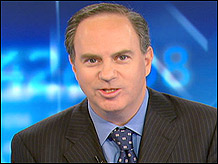Show me the money!If you're starting to look for mutual funds you can live off, be careful: Some cash cows aren't all they are cracked up to be.NEW YORK (Money) -- Tens of millions of baby boomers are approaching retirement, and if you're among them, you're likely wondering how you're going to tap your portfolio for the income you'll need over decades of life after work. Has the fund industry got an answer for you: the "income" fund!
Aging boomers are scooping these up as fast as remastered Beatles CDs. Some $70 billion in new cash has poured into them since 2004, and nearly two dozen income funds and exchange-traded funds (ETFs) have been launched during the same period. "Fund companies realize that investors have entered a mode where they are looking for safety," says Tom Roseen, senior research analyst at Lipper. "And they want to make sure they get a share of their assets." All that's great for the fund industry, but is it good for you? Before the answer, let's get a little terminology straight. With income funds, it's easy to get befuddled about what you're being pitched because there are two kinds of funds with very different investing strategies. There are traditional stock funds that own shares in companies paying out higher than average dividend yields. Then there are funds that act as all-in-one portfolios, holding stocks, bonds and other securities, such as real estate investment trusts, with the goal of maximizing the check you get each quarter. The bottom line: A dividend stock fund can be a sound choice, but you're better off staying away from all-in-one funds. You can get better long-term performance and a smaller tax bill with a fairly simple portfolio that you or your adviser can construct. Here's the scoop. Dividends are your friends Dividend stock funds offer conservative-leaning investors several advantages. First, they typically pay out substantially higher yields than the S&P 500 does. For example, T. Rowe Price Equity Income (PRFDX (Charts)), a MONEY 65 fund that looks for bargain stocks with above-average yields, recently paid out 2.3% a year, compared with 1.8% for the S&P. Among its top holdings were General Electric (GE (Charts)), yielding 2.8%, and Merck (MRK (Charts)) , paying 3.3%. You can also find index funds that track a benchmark of high-yielding stocks, such as the iShares Dow Jones Select Dividend (DVY (Charts)), an ETF that's also in the MONEY 65 list of recommended funds. Its recent yield: 3.3%. Second, dividend funds enjoy favorable tax treatment, which was recently extended through 2010. Qualified dividends are taxed at 15%; interest payments on bonds or cash are taxed at regular income rates as high as 35%. Finally, dividend stock funds can reduce your risk in market downturns, since the income payments tend to put a floor under share prices. That can make the funds a sound choice not only for income investors but also for those who want long-term growth without taking on the risk that comes with high-flying stocks. You can, in fact, be too careful The convenience of all-in-one income funds makes them tempting. They're simple, and you may have earned good returns in the past with a fund that splits its assets between stocks and bonds. In fact, Money recommends just such a fund type, the target-date retirement fund, as an easy way to save in your 401(k) plan or IRA. The problem is that when you move from investing for retirement to managing your income in retirement, an all-in-one approach can trip you up. One reason is that many of these funds are just too conservative. As they try to maximize income, they hold more than half of their assets - sometimes up to 80% - in bonds. Especially during the early years of retirement, that's simply not enough in stocks, which you need to provide the capital growth that will keep you ahead of inflation. "An income fund alone cannot provide enough to live on in retirement - you still need a well-diversified portfolio," says Christopher Cordaro, a financial adviser in Chatham, N.J. If you are considering adding an all-in-one fund to your portfolio (why not put more spending money in your pocket, right?), don't do it. You risk throwing off your entire asset mix because the all-in-one fund's holdings will overlap with those of your other funds. And if you're holding an all-in-one fund in an account outside a 401(k) or an IRA, you can end up giving too much to Uncle Sam. That's because the interest income from bonds, and nonqualified dividend income from REITs, are taxed at regular income rates. The more bond heavy the asset mix, the more you'll pay. You don't need that. You're better off designing your own retirement income portfolio. By investing more of your assets in stock funds, not only will you have a better shot at inflation- beating returns, but you'll lower your tax bill as well. So opt for a dividend paying stock fund, such as those in the MONEY 65, if you are counting on regular payouts. And to keep taxes low on the rest of your taxable portfolio, look to index funds, tax-managed funds and municipal bond funds. Following a strategy that minimizes your tax bill can add a percentage point or more to your returns each year. Looking for income to see you through retirement? That's a great way to get it. -------------------------------------------------------------------- Planning your financial future Funds: The $20 billion tax time bomb Are you paying off major debts? Or have you already paid off loans that loomed large over your household? If you'd like to share your story for an upcoming article, e-mail George Mannes at gmannes@moneymail.com |
| |||||||||||||||

